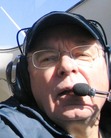Jim Poling Sr.'s Blog, page 23
August 22, 2019
Winning the biggest race
H. G. Wells, the English author of The War of the Worlds, once wrote that human history “becomes more and more a race between education and catastrophe.”
In today’s unsettled times it appears that catastrophe is winning.
Despite literacy rates increasing, the world seems less civil, less tolerant and less well-ordered. Those three characteristics all are products of good education. Education, and the human qualities it allows us to develop, is our best defence against catastrophes.
That’s worth thinking about as millions of children return to schools where they will receive classroom teaching in mathematics, reading and writing, science and other traditional subjects. If they are lucky, they might get some lessons on how to become better human beings.
It’s that last sentence that has me wondering whether our education systems need a rebalancing in terms of what and how they teach. Are they teaching too much of the stuff that helps us to acquire high-paying, high-influence work, and not enough about how to be thoughtful, caring, ethical individuals?

Certainly there is ample evidence that our society needs a heavy dose of education on how to behave.
Bullying, for instance, has become a major issue in our schools. On our streets and highways, road rage is costing us much in money, injuries and deaths. On social media and other Internet sites we see people who toss aside thoughtfulness and tolerance the moment their fingers touch a keyboard.
In politics we see purposeful dialogue abandoned in favour of boisterous intolerance, totally lacking civility. Many politicians forget, or simply ignore, the fact that there is a critical link between civility and ethics.
Respect for others is a cornerstone of ethics, which teaches us to treat people with empathy and not simply for our own personal advantage.
Our school systems should put more emphasis on, and more resources into, teaching character building. They could take a page – in fact a few pages – from what I consider to be the very best of educations; the Jesuit school system.
Yes, Jesuit education is faith based, part of the Roman Catholic Church which has its own problems. But look beyond the religious connection to see how the Jesuit system teaches the best of human values. It is a system that promotes intellectual competence, a commitment to justice and openness to growth.
It aims to train leaders in fields ranging from politics, to entertainment and sports. Anyone who looks up a list of Jesuit alumni might be surprised to see the number of names in leadership positions.
Not all Jesuit educated persons follow the lessons of commitment to justice and ethical values. A recent example is Prime Minister Justin Trudeau who argued last week that jobs are more important than ethics.
That basically was his response to the Ethics Commissioner’s report that he violated the Conflict of Interest Act when he tried to have then-justice minister Jody Wilson-Raybould let Quebec-based engineering firm SNC-Lavalin off the hook on criminal charges.
It is not that the prime minister did not know that what he was doing was ethically wrong. His early education was at College Jean-de-Brebeuf, the Jesuit school also attended by his father Pierre, Canada’s 15th prime minister.
However, that’s a discussion for another time, in another place and by other people. The point here is that the Jesuit education system, as well as some others, offers examples of what is needed in our public school systems.
Our public schools need more emphasis on teaching students how to take responsibility for themselves, as well as how to advocate intelligently for themselves and their beliefs and principles. They need to teach students the need to gather and analyse facts before making judgments.
Many potential catastrophes exist in our world. Wars, climate change, mass migrations of people, drug epidemics, gun violence are just a few that threaten our existence. However, all potential catastrophic problems can be solved, or at least alleviated.
The keys to our continued existence are better educated populations, which can be built by making education our most important priority.
Ours has become a world of thoughtless social media, too much junk TV and ‘populist’ leaders who talk and think like gangsters.
We can do better with better education, and win the race against catastrophe.
#
Published on August 22, 2019 06:41
August 15, 2019
Without change could this be our future too?
And so it begins; the second American Civil War.

It is not like the first American Civil War (1861-1865) with uniformed armies shooting at each other, but there are frightening similarities. The first civil war started when the political system failed to resolve differences over the spread of slavery.
This one is civil upheaval resulting from a political system unable to reconcile the differences between two distinct populations of citizens with different values. The differences have hardened into hatred infecting the two main political parties, the right-wing Republicans and the leftist Democrats. The centre seems to have disappeared. .This second civil war has been a long time developing, most notably since the divisive Viet Nam War of 50 years ago. All the signs have been obvious but ignored because this could not happen to “the greatest nation on earth.”
When a country’s institutions deteriorate, when citizens begin rejecting authority, and when a political system can no longer bring people together, civil war begins. In the U.S., the Congress is frozen in a state of intolerance for other political views, the justice system has been weakened by the country’s own leaders, and the Supreme Court has become politicized, rendering it less respected, and less effective.
Critical issues such as climate change, global migration, health care and collapsing infrastructure are not being addressed and will not be solved in a country at war with itself. Also, there is a danger that countries such as Russia, China and North Korea will find advantages in the weakened U.S.
The actual start of first civil war was easy to pinpoint. Soldiers of the confederacy of pro-slavery states attacked and captured Fort Sumter near Charleston, South Carolina in April 1861.
Identifying the actual start of this second civil war is not so easy. My guess is that July 23 just passed is when this one officially began.
On that day, U.S. Immigration and Customs Enforcement (ICE) agents arrived in the outskirts of Nashville, Tennessee. ICE is the federal agency that has been rounding up thousands of undocumented immigrants and holding them in makeshift prisons.
They were trying to get a man and his 12-year-old son, who had locked themselves in a van. The ICE agents planned to grab them when they left the van to go into their house.
However, neighbours gathered and formed a human chain around the van, allowing the man and his son to get out of the van and into their house
ICE had called in the local police, who just stood and watched, saying they would not get involved unless fighting broke out and they had to keep the peace. When citizens form up to stop federal law enforcement officers, I call that a sign of civil war. When local police refuse to be involved, I call that a sign of civil war.
Another sign is refusal of many victims of recent mass shootings to meet the president who came to visit them.
Even if you don’t believe civil war has started it is hard not to believe there will be one soon. Recent polling shows that roughly one-third of Americans expect civil war within the next five years.
Supporting that are rising gun sales, which increased 3.8 per cent over the last year. There now are believed to be 400 million firearms in the hands of Americans.
All those guns – more than one for each American man, woman and child – are not being used for hunting and recreational shooting. Many Americans you talk to will say people are buying them for protection against increasing violence and the possibility of civil war.
Hate groups continue to grow in the U.S., not just the white supremacists of the right but loosely-organized Antifa (Anti-Fascist) groups, which have been showing up more prominently at high-profile public rallies to protest, sometimes violently, racism and hate.
There is a lesson here for Canadians, particularly the politicians seeking election this fall. They need to stop the nasty, vindictive politicking and talk about how they can respect each other and work together to give ordinary citizens the things they need to have better lives.
If they won’t, and continue to work on behalf of their parties instead of the people, we can turn our gazes south and see our future.
Published on August 15, 2019 05:09
August 8, 2019
Rockin’ in the corn patch
I’m following the lead of Donnie Trump. I’m withdrawing from a treaty and building a wall.

I have to do it to stop thieving neighbours from stealing my corn. Every year, come late summer, they sneak into my garden at night and strip the corn stalks clean. Not a single cob left for me to enjoy.
I’ve tried to coexist peacefully with them, allowing them to roam my property freely. And this is how they treat me. Sneaking around at night with their masks, ringed bushy tails and nimble fingers.
So I have withdrawn from our treaty and am building a wall. What else could I do? This is not the United States so I can’t just shoot them.
I bought several rolls of poultry fencing and have been busy stretching it around my modest corn patch. Now I am dreaming of the little bandits pacing back and forth outside the fence, whining about being locked away from those cobs of sweet golden kernels.
I have given this much thought because, unlike Donnie Trump, I do not consider the enemy stupid. These bandits, in fact, are quite intelligent.
The Ojibwe people called them ahrah-koon-em, meaning they could do things with their hands, which have long, flexible fingers that allow them to steal anything in sight.
These guys are so smart that some studies show that once they find a solution to a problem, they can remember it three years later. I have a hard time remembering day to day where I leave my car keys.
Back in 1908 the ethologist H. B. Davis found that raccoons were able to open 11 of 13 complex locks in fewer than 10 tries. Also, they could repeat the unlocking when the locks were rearranged or turned upside down.
They also have terrific memories for recalling places where they have found food, and travel long distances to return to those places. I witnessed that several years ago.
A raccoon was at our compost bin, banging and chewing and waking us up in the middle of the night. So I bought one of those no-hurt-‘em cage traps, caught him and transported him several miles down the highway.
I left the trap armed and two days later I had another raccoon. He looked very familiar but I figured he was the other guy’s brother or some other relative. I transported him down the highway.
Two days later another raccoon appeared in the trap.
“That’s the same raccoon,” my wife said.
“Impossible,” I said, loading him into the boat to take him across the lake to the end of a deep bay where the forest is thick, wild and isolated.
We had peace for a few days. Then one morning I got up and found a raccoon in the trap.
“It is definitely the same guy,” said my wife. “Look at the way he grins at you.”
A heated debate ensued, ending when I said I would prove it was not the same raccoon returning time and again. I took an aerosol can of fluorescent orange paint, sprayed his tail and boated him to the end of the lake.
I figured I now had cleared my property of all raccoons, presumably that first guy and all his family.
Four or five days passed before my wife ran in to tell me the trap was filled again. Another raccoon, this one with an orange tail!
Friends tell me that my fencing efforts will fail because the raccoons will climb the chicken wire or tunnel under it. The prize on the other side is too tasty to ignore.
If they do get in I have another plan. I have read that if you put a portable radio near the corn patch they will stay away. It can’t be tuned to a music station, however, because they love music to steal by.
It has to be tuned to an all-talk station, which fools them into thinking that live humans are guarding the patch.
There is no electricity at the garden and I am concerned about the batteries failing. I worry that I could arrive at the garden one morning, and find the batteries dead and the corn gone. Or arriving and finding the corn gone, and the radio playing rock ‘n roll.
#
Published on August 08, 2019 06:20
August 1, 2019
Get lost in the woods
There are times when the best thing anyone can do is to get lost in the woods.
I don’t mean seriously, dangerously lost. We always should know where we are in the woods, and exactly how to get out of them.
I mean far enough into the woods where we cannot hear, see or feel the madness of the human world. Far enough in to concentrate on the natural world, which is quieter despite being as busy as our own, if not busier.
As the famous Scottish-American naturalist John Muir once said: “And into the forest I go, to lose my mind and find my soul.”
There is much going on in the woods, although we see or hear only a miniscule part of the activity: Leaves rustle in a breeze. A crow squawks a warning of your presence. A dried twig snaps under the hoof or paw of an animal that does not want to seen.
Animals signal and speak to each other but usually their talk is heard by human ears only when they raise alarm. Even trees and plants communicate, although we never hear them and could not understand their language even if we did.

Most of what is going on back here is unseen and unheard because it is happening beneath the forest floor.
“A forest is much more than what you see,” ecologist Suzanne Simard, a University of British Columbia forestry professor said during a TED Talk a couple of years back.
Simard and other researchers have found that trees communicate through microorganisms called mycorrhizal fungi; basically a beneficial fungus. These fungi are extensions of a tree’s root system. They form intricate networks that spread out and explore the soil, grow into niches and send resources back and forth between trees.
Simply put, fungal networks are a secondary root system. Simard has said hundreds of miles of fungal network can be found under one human footstep.
They help to share among tree communities water, carbon, nutrients, and even warn of danger, such as an invasive insect burrowing into the bark of one or more trees.
We have barely scratched the outer bark of the forest in terms of what it has to teach us. Scientists like Simard continue to probe the mysterious working of the forests, uncovering information about the importance of biodiversity, plus ideas for better forest management and for helping to control the effects of climate change.
We unscientific types, however, can learn much just by going into the forest to reflect. The woods offer lessons to those who enter them with clear minds, and the patience to absorb to what they have to teach.
One lesson is that we are part of the natural world and should behave more like it.
For instance, forests teach of us that we can communicate without yelling. When you look around the forest you see no greed, no anger, dislike or envy. Any violence can be attributed simply to getting what is needed to survive.
Also the forest teaches us to work together instead of competing for resources. Look at ants. They work tirelessly as a team creating their living systems. No one group does all the work while others watch from the sidelines. All work together.
And, we should remember that the forest is a place where the colour of your bark does not matter. Diversity is critical to forest life, and to human life. The web of life is weakened every time one species, no matter how different, small or insignificant, disappears.
We spend much time worrying about larger species, such as whales and rhinos. These are important, of course, but most important are the complex webs of organisms that include not just animals but plants, insects, fungi and bacteria.
If a type of whale becomes extinct, that is a tragedy with some impact on human life. If some unseen organisms become extinct it is possible there will be a chain reaction with major impact on our lives.
Also, concern about forests and protecting their biodiversity seems much focussed on the tropical rain forests.
Our temperate forests are vital as well, and that is why we all should spend more time getting lost in them – figuratively.
#
Published on August 01, 2019 05:00
July 25, 2019
Democracy dimming in darkness
Here’s a follow-up-up to last week’s column about how angry, autocratic politicians are working to turn voters against journalists.
Journalists ask questions about questionable government affairs. They dig out facts and write stories that autocratic politicians don’t like because they are neither flattering, nor favourable.
So the autocrats call the journalists names, such as losers and enemies of the people, and urge voters to turn on them. That thinking seeps down into the government’s agencies and their bureaucrats, important sources of information about a government’s work.
When its employees follow the government’s lead, journalists are cut off from the help they need to produce the stories that the public wants and needs.

The Ontario government provided an example of this with its non-helpful approach to journalists trying to cover the story of two teenage girls missing in Algonquin Park.
I was involved in that story, having been asked by some southern Ontario newspapers to drive to Algonquin Park to assist with the reporting.
I arrived at Smoke Lake air base on Highway 60 and saw the parking area jammed with police, paramedic and volunteer searchers’ vehicles. I went through the open gate and into the aircraft hangar where three OPP officers sat at a table.
I asked them if this was the search command centre and whether the news media would be allowed here. One officer, a polite and respectful young guy (he even called me sir!), said he did not know but he would ask his sargeant on my behalf.
As he left, I was grabbed by the arm and yanked around. I found myself looking at a belligerent Algonquin Park ranger who demanded: “Do you not know how to read?”
That I learned later was a presumed reference to a No Unauthorized Persons sign out by the open gate.
My first thought was to say: “Yes, I can read: enough to have written and published 10 books despite being blind in one eye. Now get your paws off and let me finish my business with the OPP.”
But experienced reporters understand that their job is to stay focussed on the story, not to fight with people in authority. Their editors have lawyers to do that.
As I was being escorted off the property an OPP officer ran up and told me that reporters would not be permitted at the search command area but could get information about the search through the OPP media office in Smith Falls. I thanked him for his help, while resisting the temptation to ask him if he would mind giving human relations lessons to Ranger Bob.
The result was that myself, and a few other media types who arrived later, stood on the Highway 60 shoulder hoping to pick up bits and pieces of what was happening with the search. That created a dangerous situation in which the media people, and passing motorists, could have been hurt.
One reporter, trying to read her cell phone screen in the bright sunlight, absent-mindedly backed into the traffic lane. If a couple of others had not shouted at her, she could have been hit by a passing car.
The authorities at Smoke Lake were just doing their jobs, although the park ranger could use training on how to do it without the storm trooper tactics.
Their bosses, the autocrats at Queen’s Park, were not doing theirs. If there had been an accident out on the highway, the blame would have rested solely with them.
This is a government that despises the media, in fact is afraid of it, and will do whatever it can to stop journalists from doing their jobs.
Professionally-run governments know how to handle these situations. A professional government operation would have had an information officer at Smoke Lake; someone to organize journalists into a safe area where they could view comings and goings without bothering search teams.
That’s how it works in a democratic world.
But angry autocrats know nothing better than shouting slogans about journalists being ”the enemy of the people” and scumbags working “in the weeds.”
The Washington Post masthead warns that “Democracy Dies in Darkness.”
I see our democracy dimming every day, and it has nothing to do with advancing age, or having one blind eye.
#
Published on July 25, 2019 07:43
July 18, 2019
Doughnuts do have holes
It was a close call. Very close.
I was driving a narrow dirt road that took a sudden, sharp turn. A turn directly into a piercing July sunset.
I was blinded, and slapped down the visor but still could not see because the sunlight was diffused by the smokey film on the inside of the windshield. I braked and skidded to a stop, just in front of a row of thick-waisted oaks and maples.
No one smokes in my car, but I later learned the smokey film is created by what auto buffs call “off-gassing” from dashboard plastic.
Whatever, it reminded me that there is hidden dirt, often dangerous, that only sunshine will reveal.

That got me thinking about journalism, which is being beaten savagely and unfairly by politicians and their bureaucrats who want people to hear and see only what they think they should hear and see.
Autocratic politicians are working to turn the masses against journalists and their reporting, calling them the “enemy of the people.” Ontario Premier Doug Ford says journalists are “getting into the weeds” when they ask questions about questionable government appointments.
The campaign against journalists is working well for the autocrats. Journalists are being imprisoned or murdered at a record rate around the world. There are fewer reporters, photographers and editorialists to ask questions that voters need to have answered.
Article 19, a human rights group, says that hostility toward the media is becoming normalized globally because of the growing number of “strongman” populist leaders who vilify reporters simply for doing their jobs.
The increasing hostility towards journalists comes at a time of unprecedented job losses in the news industry. The U.S. Labour Department has reported that the American newspaper industry lost almost 60 per cent of its jobs – a total of 271,800 – between 1990 and 2016.
The magazine industry did not fare much better, losing 36 per cent of its jobs during the same period.
In Canada, the Canadian Media Guild has reported 10,000 lost media jobs between 2010 and 2016.
As losses mount, more people turn to social media sites like Facebook and Google for “news,” which often is gossip, speculation, rumour or information not thoroughly fact checked.
Even some online news outlets are beginning to struggle under the weight of Facebook and Google popularity.
Buzzfeed, the American online media company, announced earlier this year layoffs of 15 per cent, or 220 workers. Verizon, which includes HuffPost, AOL and Yahoo News, announced 800 job cuts in its media division.
Our world is in serious trouble with fewer and fewer professionally-trained journalists. Without them, strongmen, corrupters and con artists do what they wish without anyone informing the public.
Some complain that journalists focus too much on things going wrong in society. Too much negative news, they say. I’ve never believed that because every day I read positive stories of human good.
Negative things are out there and need to be exposed.
That was explained beautifully by a 1962 exchange between Frederick Nolting Jr., the American ambassador to Saigon, and French journalist François Sully, working as a Newsweek war correspondent.
Nolting was upset about negative coverage of the Viet Nam war, which was going much more poorly than U.S. ambassadors and politicians were saying.
“Why, Monsieur Sully, do you always see the hole in the doughnut?” Nolting demanded of Sully.
“Because, Monsieur l’Ambassadeur,” Sully replied, “there is a hole in the doughnut.”
(This exchange quoted from the 1988 book A Bright and Shining Lie by author Neil Sheehan).
Monday, I personally experienced the ugliness against working journalists.
I was in Algonquin Park freelance reporting on two teenage girls missing since Thursday. I went to Smoke Lake air base to ask the Ontario Provincial Police if they had a command centre there and if I could be authorized to report from it.
I went into the base hangar and asked one OPP officer, who volunteered to go and ask his sargeant on my behalf.
As he left I was grabbed physically on the arm by a belligerent Algonquin Park ranger who demanded to know if I could read, a reference to a No Unauthorized Persons sign at the open entrance gate.
More on that incident in next week’s column.
#
Published on July 18, 2019 12:32
July 11, 2019
Asking the critical question
Reality often is more brutal than fiction.

You realize that when reading The Border, the 2019 novel about the Mexican drug cartels and their American enablers.
It’s a big book, too long at 716 paperback pages and with too many characters and side stories. It is a good book, however, that draws on real-life experiences from America’s longest war – the hopelessly ineffective 50-year-old war on drugs.
It is a heartbreaking novel that lays bare the savagery of the drug cartels, the inhumanity of the drug pushers and the tragedies of the addicts.
It also shows graphically the hopelessness of law enforcement professionals and others on the front lines of a war that consumes them. They soldier on, but the war on drugs is effectively over and the drugs have won.
For all the novel’s 300,000 words, one word is critically important: Why?
“What is the pain in the heart of American society that sends us searching for a drug to lessen it . . . ?” the novel’s central character asks. “I don’t have the answers but we must ask the real question - Why?”
Why did the wealthiest, once most influential and respected nation become the world’s largest illegal drug user? A World Health Organization survey of 17 countries shows America with the highest level of cocaine and marijuana use.
The Centres for Disease Control and Prevention estimates that 72,287 people died from drug overdoses in the U.S. in 2017, an 10-per-cent increase in one year. There were an estimated 16,800 drug overdose deaths in 1999, so the four-fold plus increase over 20 years is stunning.
U.S. drug overdose deaths now outnumber deaths by gun violence and auto accidents.
Two hundred Americans dying every day of drug overdoses is a strong indicator of a nation in a death spiral. But the question remains: Why?
A start to finding the answer is found in the U.S. attitude toward shooting wars. For various reasons – some bad and some good – America gets into a lot of wars. And, history shows that since ancient times combat and drugs are comfortable bedfellows.
Cocaine was the drug of choice among combatants in the First World War. Amphetamines were taken in large numbers by front line troops in the Second World War.
During the Korean War the Pentagon handed out millions of Benzedrine pills to servicemen, some of whom made up their own “speed balls” by mixing heroin and amphetamine into an injectable mixture.
But drug use among American troops hit new highs during another lost war – Vietnam. The American military issued hundreds of millions of dextroamphetamine ‘go pills’ to troops fighting the North Vietnamese. Researchers have estimated that 70 per cent of U.S. soldiers in Vietnam used some form of drugs in 1973, the year the U.S. was forced to retreat.
Drug use among American soldiers continued, and likely increased, during the Iraq and Afghanistan wars.
Many soldiers return from wars with drug dependence. One study done by the Drug Policy Alliance in New York shows tens of thousands of veterans in prisons and jails, a large percentage for drug-related offences.
Another answer to “Why” might be found in America’s fading dream. The promises of equality for everyone and opportunities for all have been left unfulfilled.
Immigration control, crumbling infrastructure and a growing chasm between super haves and growing numbers of have nots are among challenges depressing the national spirit. The challenges are not being overcome, or even effectively addressed, because of political polarization creating two opposing Americas.
There is a lesson in all this for Canada, which has its own serious and growing drug problem.
Canadian government agencies tend to jumble and confuse statistics, but the Public Health Agency reported an increase in opioid overdose deaths of almost 36 per cent in 2017 over 2016. There appears to have been another increase – of almost 10 per cent – in 2018.
There likely are many answers to the question of why drugs are destroying American and Canadian societies. Another critical question is how stop it. The answer is simple: end the political partisanship madness and work together to end this crisis.
That won’t be easy because as The Border novel implies, the tentacles of the drug trade reach into high financial circles, and governments.
Published on July 11, 2019 09:27
July 4, 2019
Thoughts of chipmunks roasting on an open fire
I need to confess: I have harboured bad thoughts about chipmunks. Murderous thoughts.
I know, chipmunks are cute and fun-loving little critters. They have drawn millions of smiles as the Disney characters Chip and Dale and have enthralled children in comic books and video games.

And Alvin and The Chipmunks made chipmunks world famous with their blockbuster hit The Chipmunk Song (“Christmas Don’t Be Late”) in which Alvin wishes for a hula hoop.
I never really took to that song, preferring instead The Twisted Chipmunk Song, which headlined the 2000 Christmas album Chipmunks Roasting on an Open Fire.
The reality of chipmunks is that they are rodents. Mice and rats are rodents and people don’t consider them cute and cuddly.
Also, chipmunks dig holes. Not just holes, but holes that are connected by tunnelling systems as elaborate as the catacombs of Paris or Rome.
Despite having millions of acres of forest to dig in, chipmunks prefer to conduct their excavations in gardens, lawns and septic beds. Lovingly planted seeds and bulbs have no hope of sprouting in chipmunk territory.
When they are not digging up my property, chipmunks are eating. They never get full. National Geographic Kids magazine says that a single chipmunk can gather 165 acorns in a day.
They carry off acorns, stolen bird seed, and anything else they can mooch, in cheek pockets that can stretch three times the size of their heads.
Many people view chipmunks as social creatures, animated and friendly and always willing to participate in a friendly game of tag. They often are seen chasing each other but these are not friendly games of tag. They are angry, hot pursuits to recover food one chipmunk has stolen from another.
Chipmunks also are not friendly with other critters. They are at constant war with the blue jays who visit our feeding stations.
They chase the jays off the seed piles then squeak and chipper at them not to come back. The jays sit in the trees, jeering loudly in protest and waiting for an opening to swoop in and grab a mouthful of feed.
There are pauses in the war when the chipmunks have filled their cheeks with seed and must return to their catacombs to store it for winter hibernation. Unlike bears they don’t sleep through the winter but get up often to eat their stored food, then go back to sleep. They sleep well on their full stomachs. The National Wildlife Federation says that a sleeping chipmunk’s heart rate slows to four beats a minute compared with the hyper rate of 350 beats a minute when they are awake.
All this is interesting information but it does little to subdue my murderous thoughts, which increase when I think about chipmunk reproduction rates. Female chipmunks can give birth twice a year, producing two to eight pups each time.
I have counted as many as eight chipmunks around the bird feeding stations. I calculate that if half of them are females producing eight pups each twice a year, that’s 64 new little chipmunks to put up with each year.
These calculations nourish my murderous thoughts. A possible 64 new chipmunks a year over 10 years is 640 chipmunks, and so on.
Far too many. I need to start reducing their numbers. Rat poison? Mechanical traps? Pellet gun?
I have read that you can buy fox urine and spread it around their tunnelling areas. They sniff it, fear that a fox is waiting to eat them and move away.
That sounds like the product of a super-charged marketing imagination. Besides how does anyone go about collecting pee from foxes?
As I ponder these thoughts, I hear a chipping sound and feel something at my foot.
I look down and see standing on the toe of my shoe a cheery looking chipmunk. He stares up at me with bright, saintly eyes and squeaks happily.
I’m not fluent in chipmunk talk but he seems to be saying: “Why so glum, chum? Relax and have some fun. Wanna play a game of tag?”
He jumps off my shoe and races toward the bird feeders.
That little face is so adorable. My heart melts; my murderous thoughts evaporate.
Some rodents are cute and cuddly.
Published on July 04, 2019 05:23
June 27, 2019
Rough air ahead
Staring out a window at Sky Harbour Airport in Phoenix, AZ I become increasingly edgy.
Outside that window, baggage handlers toss dozens of bulky bags onto the conveyor belt crawling up into the belly of the aircraft I am about to board. The stream of bags appears endless, and very, very heavy.
I shift my glance to the outside thermometer. It is 101F and only 9:30 a.m. My flight is delayed, as many are these days, and the longer the delay, the hotter it is going to get. The hotter it gets, the harder it will be for my airplane – cargo hold jam packed and every seat booked - to get off the ground.

Airplanes roaring along a runway need lift to get airborne, and the warmer the air flowing across the wings, the less lift. The less lift, the less chance of getting into the air before the runway ends.
Temperature, airport elevation, weight, type of aircraft all figure into the calculations that determine whether an aircraft will get off the ground.
At 104F the people who make ‘fly’ or ‘no fly’ decisions start to get concerned. At 118F some smaller regional flights are not allowed to fly. Larger, longer distance jets, like the one I am about to board, probably will be given flight clearance until the temperature gets into the 120s.
Dozens of flights were cancelled during the summer of 2017 when temperatures in the U.S. southwest soared into the 120s. In some world hot spots, such as the Middle East, flights often are scheduled for evening when temperatures are cooler.
I’m sure the computers, and the people who make the decisions, know what they are doing so I am not too concerned about the increasing heat and my flight. However, the experience widens my perspective on our changing climate: Changing weather patterns are making air travel less reliable, more uncomfortable, and more costly.
Hotter temperatures, more wild storms, stronger and more frequent winds are increasing delays, cancellations, rerouting, and rocky, uncomfortable flights.
Two of the four flights I have taken recently have been among the roughest in my lifetime of air travel. Both were strapped in flights with little or no service.
The University of Reading in England expects that in-flight injuries caused by rougher flights will increase three-fold over the next 30 years.
A study by the university predicts that severe turbulence on North Atlantic flights will increase by as much as 180 per cent. Flights over North America will see a 110-per-cent increase in turbulence and flights over Europe 160 per cent more.
Meanwhile, the leader of a union representing flight attendants says that rough air incidents caused by shifting air currents and clear air turbulence will double over the next 30 years.
In-flight turbulence could reach strengths that could “catapult unbuckled passengers and crew around the aircraft cabin,” Sara Nelson, international president of the 50,000-member Association of Flight Attendants, said in a column written for Vox.
Not all flight problems caused by climate change will be in the air. Many airports are located on flat, low-lying ground that is subject to flooding during storm surges. A U.S. federal assessment has found that 13 major U.S. airports are at risk from storm-driven ocean surges and heavy downpour flooding.
Also, warmer temperatures are melting permafrost in Arctic airport locations. The airport at Iqaluit, N.W.T. is built on permafrost and its runway and taxiway have had to be redone because of the melting.
Average global temperatures have been increasing, notably since the 1970s. Eighteen of the earth’s warmest 19 years have occurred since 2000. Last year was the fourth warmest year ever recorded on earth.
Global temperatures are not expected to stop rising any time soon. A study in the journal Climatic Change has said that heat waves will become more frequent and that annual daily highs at airports worldwide are projected to rise seven to 14 degrees Fahrenheit by 2080.
Airline pilots do their best to go above or around rough air. But climate changes are producing more super storms, and more frequent thunderstorms that reach higher altitudes. Avoiding rough weather can mean longer flights and added fuel costs.
So folks, tighten your seat belts and hope that the drink cart makes it to your row.
Published on June 27, 2019 06:14
June 20, 2019
Gladiators not needed
Molto bene, Italia! Perfettamente!
Indeed Italy has done a wonderful thing in disrupting a Steve Bannon extreme right project aimed at converting the world to his white power conservatism.
Bannon and a British Conservative acolyte named Benjamin Harnwell had leased an 800-year-old monastery in Collepardo 70 kilometres east of Rome. They planned to use it as an Academy of the Judeo-Christian West, “a modern gladiator school” that strengthens the underpinnings of the Judeo-Christian western world.
Translation: gladiators who will join the war against Muslim advancement.
Really cool. A return to the Crusades to save the holy West from the Muslims. Exactly what the world wants and needs – more hatred, more violence and less diversity.

The Italian culture ministry, listening to protest groups, has cancelled the lease, citing irregularities. The protest groups noted that the monastery had a history of improving humanity: During the Middle Ages, monks conducted scientific research there and cultivated 2,500 types of plants for medicinal purposes.
In case you might have forgotten the name, Bannon is Donald Trump’s former chief election and White House strategist and promoter of Breitbart News, an alt-right news and opinion distributor. Some critics call him a crypto-fascist.
Harnwell, 43, isn’t known for much except being a helper to conservative thinkers and leaders.
Steve Bannon is not stupid as a stone, like some of the folks he hangs out with. Actually, he is considered brilliant, able to turn mind and hand to any number of intelligent undertakings. His gladiator school definitely is not one of them.
The last thing our world needs now is more extreme right-wing politics. In fact, the last thing we need is any extremism, right or left. We are stuffed with that junk, especially in our political systems.
Hyper-partisan politics, saturated with mad dog conservatism and mad cat liberalism, are damaging the ability to govern in places that have been models of democracy. In Canadian federal, provincial, and municipal politics, we are just not getting done the things that need doing.
Listening, considering other views and compromising for the common good are missing too often in today’s politics.
In the U.S. the situation is out of control. That country has entered a stage of devolution that could turn to outright civil war. It is no longer the “United” States.
Canada is rolling along a similar road. Party leadership controls everything, from what its members say in Parliament to vetoing a local riding’s selection of a candidate. For instance, Jane Philpott and Jody Wilson-Raybould, once among Prime Minister Justin Trudeau’s best cabinet ministers, have been barred from running for the Liberals in this fall’s election because they did not accept the party line on the SNC-Lavalin scandal.
Instead of tossing out anyone who disagrees with them, political leaders should be inviting challenging opinions. They need to take a lesson from Abraham Lincoln.
Lincoln, facing the greatest crisis in U.S. history, did not surround himself with yes people – friends and allies who would support blindly any policy that he proposed. He gathered ambitious people with conflicting personalities who would question and challenge and in the end do things that benefitted the people, not just the party.
Lincoln’s approach is documented in the 2005 book Team of Rivals: The Political Genius of Abraham Lincoln by historian Doris Kearns Goodwin. Our political leaders should read it.
We, the citizens, need to reconsider our political party system. It is rotting at its core. It puts party before principle and party before the people.
What’s needed is for us all to move to the calmer centre where we can sit and discuss, thoughtfully and without yelling at each other, solutions to our problems.
Certainly what we do not need are gladiator schools to harden our political beliefs. We need more intelligent political discussions and debate that explore options. We need ideas – whether they come from thinkers on the left or right of the political spectrum.
Politicians need to listen to and respect the thoughts of all parties. They need to find common ground in that thinking and be willing to compromise to achieve solutions that will be good for the people, not the political party.
A country in which politicians cannot work together for its people is a country doomed to fall apart.
#
Published on June 20, 2019 05:53



